As guitarists, there’s a lot of options when it comes to all the different guitar pickup types.
As a guitarist with over 15 years of experience, I’ve written this helpful guide for you to get a better idea of which pickups may be right for you.
Single Coil Pickups
Single coil pickups were the first type of guitar pickup to be invented. They use (as the name suggests) a single coil of wire to form a copper coil which induces a signal from the vibrating and magnetized guitar strings above it.
Because of their design, the copper wire is susceptible to electromagnetic interference (EMI), which causes “hum”.
Read more: How guitar pickups really work (with proof!)
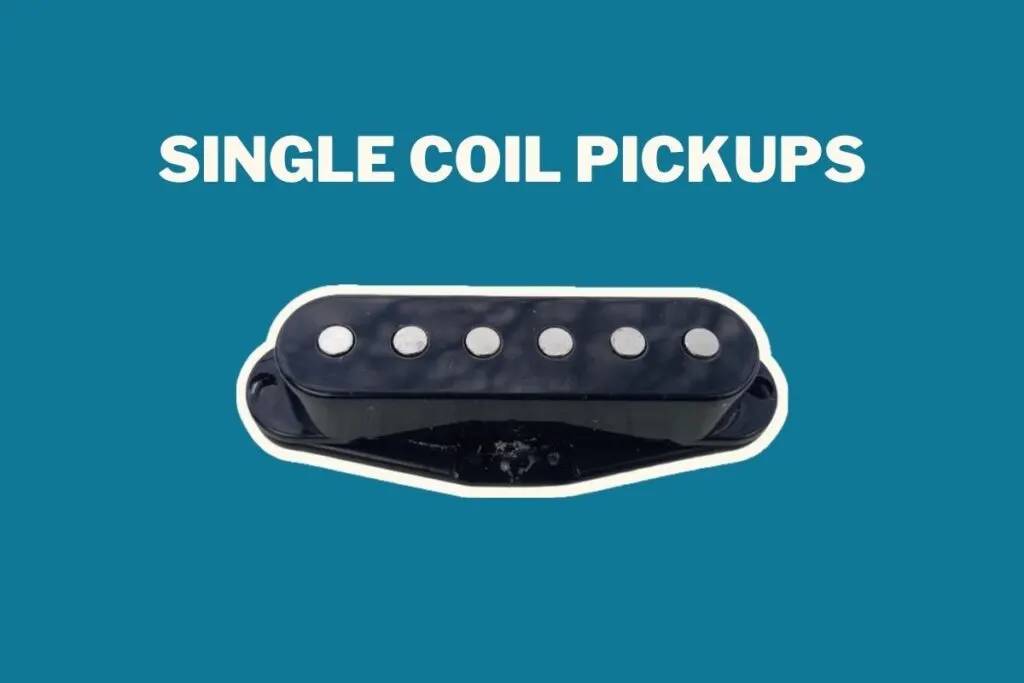
Single coil pickups generally sound bright and jangly, but are also great for running through a distorted amp. These pickups have been used across pretty much every genre of music.
Let’s take a look at some of the most popular single coil pickup designs.
Stratocaster Style Pickup
These are by far the most common type of single coil pickup out there. There’s a high chance that you’ll play a guitar with these at some point.
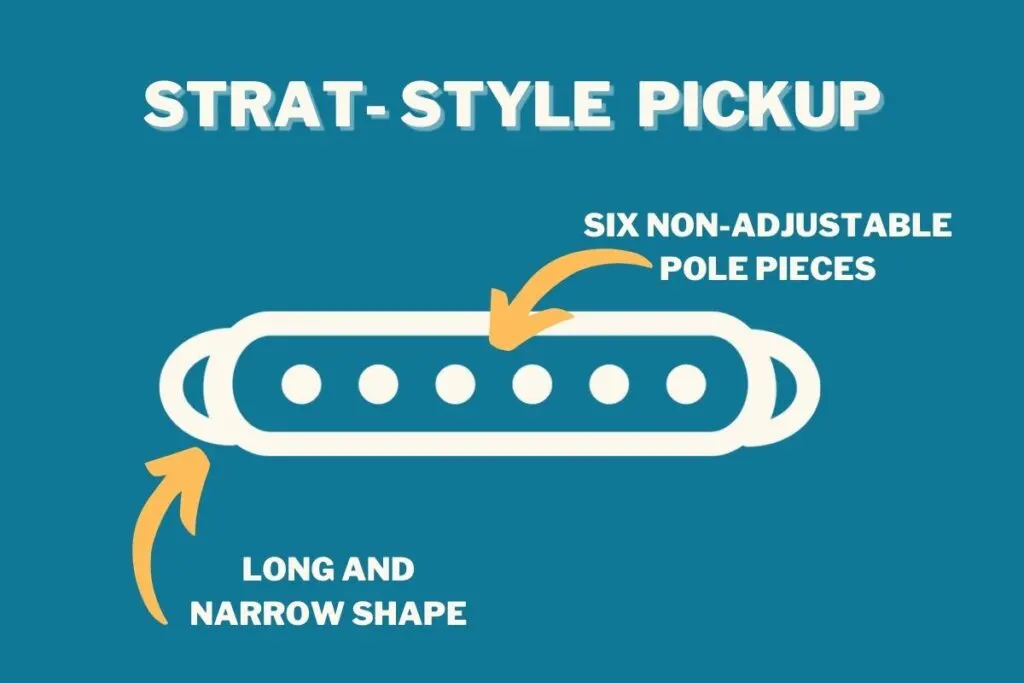
How it sounds
Strat-style pickups are known for being bright, jangly, and snappy. They have a clear and direct sound that’s great at articulating the full response of a note, from the first pluck to the ring out.
They’ve been used by countless artists over the years, across a wide range of genres. From funk legend Nile Rogers to Swedish shredder Yngwie Malmsteen, these pickups are a great option for guitarists of pretty much any genre.
When used as part of a clean signal, a Strat pickup has plenty of snap and percussive twang that’s great for country and funk tones.
Strat pickups aren’t just for clean tones though, far from it.
Legendary guitarists Jimi Hendrix and Stevie Ray Vaughan are great examples of how these pickups can dirty up whilst still retaining their signature snappiness.
It must be said, though, that the more gain and distortion you put on these pickups, the more unruly they become, which is true for most single coil pickups.
For this reason, I’d stay away from Strat-style pickups if you’re looking to play high-gain music like heavy metal or any similar genre, as you’ll find yourself constantly battling against hum.
Personally, I’m a really big fan of Stratocaster style pickups as I find that I can get a lot of tonal variety from them.
I have two Fender Stratocasters, both with their stock pickups installed, and I can’t get enough of them!
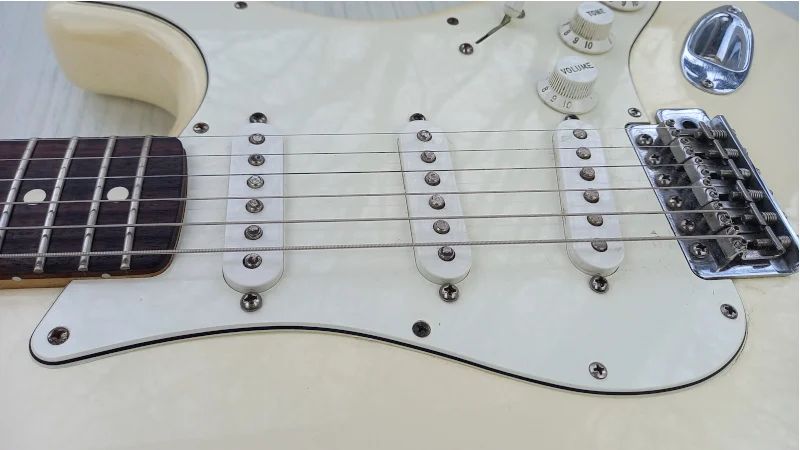
Examples of Strat-pickups:
- Sultans of Swing – Dire Straits
- Couldn’t Stand the Weather – Stevie Ray Vaughan
- Le Freak – CHIC
P-90 Pickup
The P-90 pickup (sometimes styled as “P90”) is Gibson’s take on the single coil pickup.
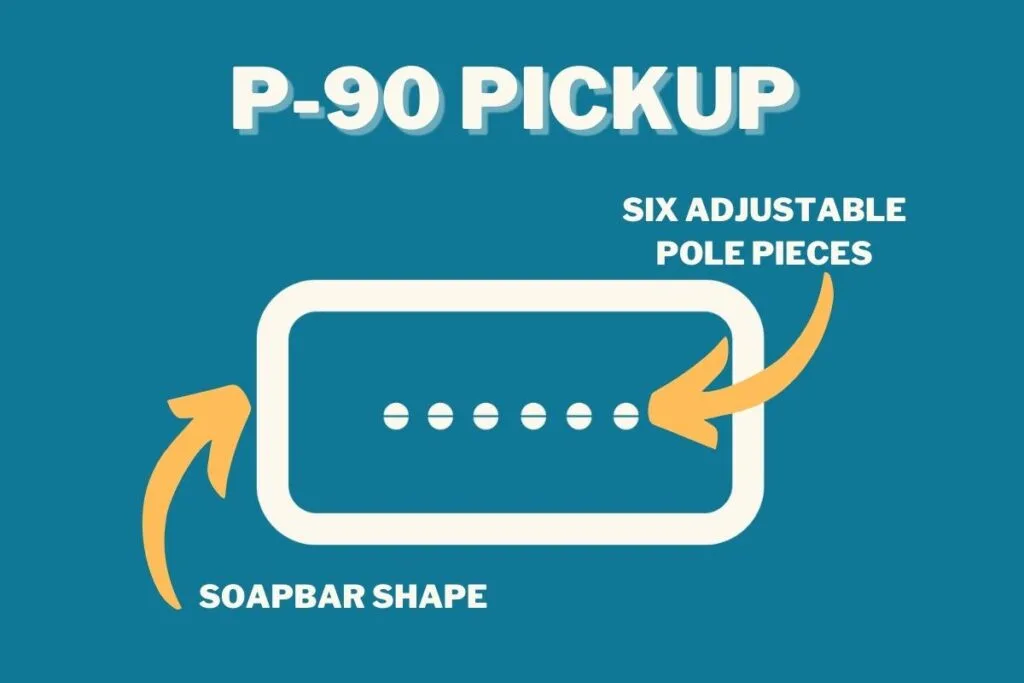
How it sounds
P-90’s are a thick sounding single coil pickup, with plenty of mid-range and smooth low-end.
They were the foundation for Gibson’s “PAF” humbucker pickup, so they have some of that sonic humbucker weight behind them.
It’s true that they lack some of the brightness compared to other single coil designs, but I think they more than make up for it in the punch that they can give to your sound.
Through a clean signal, these pickups can give you both buttery-smooth jazz tones and biting blues tones. With a little distortion, P-90’s can stand up with the best humbuckers for giving grit and drive to your sound.
Like most other single coils, I would try and stay away from super high-gain music like heavy metal with a P-90.
But, as far as single coils go, these are very versatile pickups. Probably a bit more than the Strat-style pickup!
Jazzmaster Pickup
No, you’re not seeing double! This is a Jazzmaster style pickup and, while it may look similar to a P90 pickup, it’s actually quite different.
In fact, a lot of people think that Jazzmaster pickups are P-90’s, but they actually have almost nothing in common other than their look.
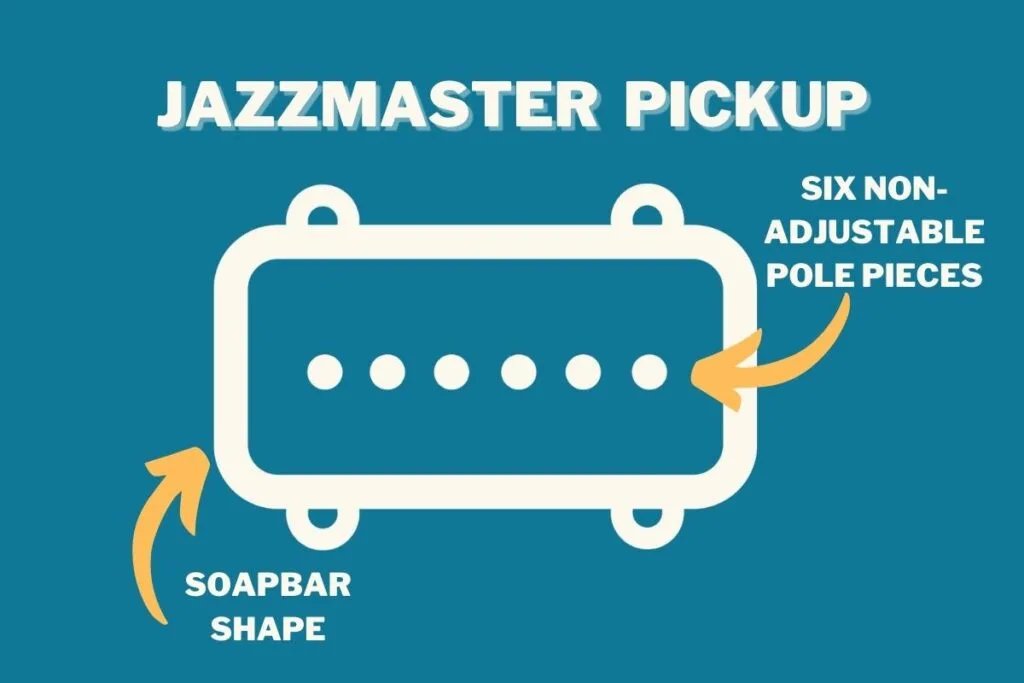
How it sounds
The Jazzmaster pickup has the jangly snap and twang you’d expect from a single coil, but with a broad tonal range that gives the tone body and depth.
In the bridge position, these pickups have a lot of (and sometimes, maybe a bit too much for me) bite and grit, which makes them a great choice for rock, grunge, and punk.
On the neck, they have a woodier, deep, and plucky sound that’s perfect for jazz. But, again, throw some distortion on it and you’ll get plenty of authentic rock and grunge tones.
I love the sound of a Jazzmaster pickup. My Fender Marauder has one in the neck position, and it sounds incredibly smooth.
The balance of snap and mellowness makes it a versatile pickup that’s perfect for jazz-licks, or some distorted riff fun.
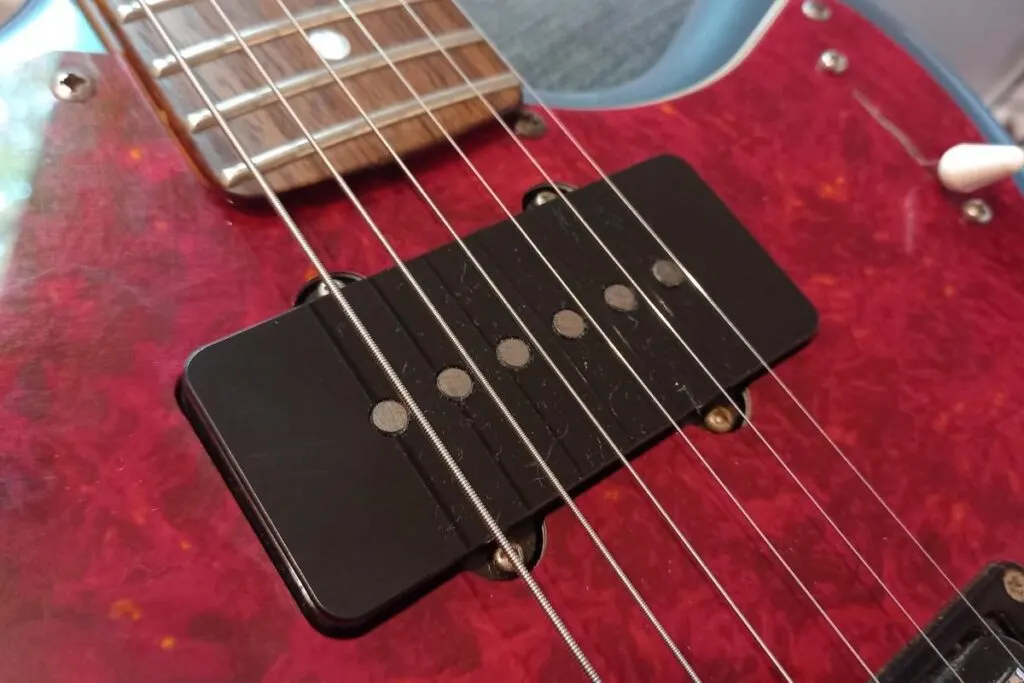
Telecaster Style Bridge Pickup
The Fender Telecaster is unique to this list because it has two unique styles of pickups: one in the neck position, and one in the bridge. Let’s start by looking at the Tele’s bridge pickup.
How it sounds
The Telecaster bridge pickup is a warm, twangy, full-bodied beast that’s a great choice for any guitarist looking for some power behind their playing.
As mentioned, the metal plate rolls off some of the high-end giving the Tele plenty of weight but less “sparkle” than a Strat-style pickup.
In a clean signal, this pickup is great for bright but crisp country licks. With a bit of overdrive, the Telecaster bridge pickup has a kind of roar behind it that is perfect for both driving rhythm and soaring leads.
But, again, this isn’t a pickup for metal. Though “heavier” versions of the Telecaster guitar do exist, like the Jim Root signature model, these don’t use standard Telecaster-style pickups.
The Telecaster has been a staple in country, rock, and blues since it came onto the market, and listening to one, you can hear why.
Blockquote: Examples of a Telecaster in songs:
- Fire – Jimi Hendrix
- Dazed and Confused – Led Zeppelin
- Mama Tried – Merle Haggard
Telecaster Style Neck Pickup
I’ve covered the bridge pickup, now let’s enter the slightly more divisive world of the Telecaster’s neck pickup!
How it sounds
As you’d probably expect from a neck pickup in particular, the Telecaster neck has a wooly, soft, and warm tone with a lot less bite in comparison to other single coil neck pickups.
It’s often described as “darker” than the Tele’s bridge pickup, due to its quieter output and rolled off high-ends, partly in thanks to its cover.
This contrast between the neck and bridge pickups can be quite off-putting to some players. In fact, the neck pickup itself is quite a controversial topic in the guitar community. Seriously. There’s a lot of forums with people arguing back-and-forth as to the merit of the Telecasters neck pickup.
Some people love it, others hastily replace it.
Personally, I’m a big fan of the sound (and Telecasters in general!). The mellow, softly-spoken neck pickup is a great choice for jazz and blues, and adding a little distortion can take you into muddy-grunge territory.
Jaguar Style Pickup
The last of our “guitar model specific” pickups: the Jaguar style pickup is a pickup with plenty of bite.
How it sounds
Like its large-cat namesake, the Jaguar style pickups come with a set of jagged claws that surround the pickup.
This notched metal cradle plays two key roles in the sound of the pickup: it provides shielding to reduce hum, and it concentrates the magnetic field around the pickup, which makes for a stronger (and therefore louder) signal output.
This results in a very bright and twangy character that’s become synonymous with the Fender brand. Jaguar pickups are described as being brighter and tighter than their other Fender counterparts.
They’re another example of how versatile a pickup can be. While it was designed for the surf-rockers of the 1960’s, the Jaguar sound played an important part in the 1970’s punk scene, and was made iconic by artists such as grunge legend Kurt Cobain, and lead guitarist of The Smiths Johnny Marr.
Lipstick Pickup
Now we start entering the stranger territory of more uniquely designed pickups, starting with the lipstick pickup.
How it sounds
As you’d expect from a single coil pickup, lipstick pickups have twang and jangle, but they’ve also got a “looseness” and darkness to them.
This is caused by two main factors: the lack of pole pieces, and the metal casing.
The lack of pole pieces (instead relying on the bar magnet to magnetize the strings above) results in a less precise tone, meaning that the tone can be described as a lot “looser” or “muddier”.
This is made further muddier by the metal casing. Like the Telecaster neck pickup, the metal casing of a lipstick pickup creates a more mellow sound by slightly rolling off the high frequencies.
With a slightly lower bass and mid response, and grittier high ends, the lipstick pickup stands out in both its unique design and characteristic gritty sound.
In my opinion, this makes lipstick pickups the perfect choice for rhythm guitar tones. Just listen to Kashmir by Led Zeppelin. That iconic guitar riff is recorded on a Danelectro with lipstick pickups.
But, they’re also great for lead tones too. Check out “Boom, Like That” by Mark Knopfler. Again, he uses a Danelectro with lipstick pickups for the main riff. Though the amp tone is clean, you can hear their characteristic grittiness coming through.
Gold-Foil Pickup
These pickups are defined by their iconic foil wrapping, but is all that glitters gold?
How it sounds
“Gold-foil” is a catch-all term that covers a lot of different designs of pickup, so it’s hard to pin it down to one particular sound.
The most prevalent design for modern gold-foils appears to be the wider soapbar design. These pickups have a broad frequency response that makes them warm and articulate.
For a single coil, these tend to have a bit more drive and grit behind them, similar to the sound of other soapbar pickups, but a bit weaker due to the rubberized ferrite magnet.
Its background as the go-to pickup for cheaper guitars makes it a good choice if you’re looking to replicate vintage guitar tones. Also, its LoFi nature also makes it a great choice for garage rock and grunge.
Blade Single Coil Pickup
Blade pickups, sometimes called rail or “hot rails” are another pickup with a distinctly unique look.
How it sounds
I have a single coil blade pickup installed on my Fender Marauder as part of the “triplebucker” (more on that later…)
It has a bold, punchy, and articulate sound, with a balanced response across all strings. I find that it has less “bite” than my Strat pickups, but is also less mellow than my Jazzmaster pickup.
It’s a really versatile type of pickup and is great across pretty much any genre of music.
Though, it goes without saying at this point, the more gain you put into your sound, the more hum you’ll notice from your single coil pickup – so be wary when using these for heavier styles of music.
Like with any pickup, there’s plenty of different models available with different levels of output, from super mellow to piercing bright depending on the tone you want.
Magnetic Field Design (MFD) Pickup
Magnetic Field Design (shortened to “MFD”) pickups were designed by Leo Fender himself at G&L Musical Instruments, a company he founded alongside Dale Hyatt and George Fullterton towards the end of the 1970, and would be his final business venture.
How it sounds
Just like Leo’s vision, these pickups are the next evolution of the Strat pickup.
The tone is warm, clean, and clear with a high output that doesn’t introduce any extra hum (though there is a normal amount of hum for a single coil).
The ceramic magnet provides plenty of energy to give the strings a crisp bite, whilst the adjustable pole pieces let you hone in your pickups tone.
Want less mid-tones? Raise the slugs under the E, A, B, and high-E strings. Want less brightness? Lower the B and High-E.
Leo is quoted as saying “G&L guitars and basses are the best instruments I’ve ever made” (Source), and you’d be hard pressed not to agree.
Toaster Pickups
This single coil pickup is famed for its use in Rickenbacker guitars since the late 1950’s, and is still used in its vintage models today.
How it sounds
These pickups are the source of the iconic Rickenbacker sound, which means a lot of treble and high-end, and lacking any bass.
It’s a very specific sound that’s great for certain styles of playing, and really not great for others.
I think they’re great for country, pop, and 60’s era rock due to their relentless jangly nature. But I’d avoid them if you’re looking for a pickup that will give you versatility to explore more genres like jazz, blues, and metal.
If you want a pickup that will cut through a mix, give some sparkle to chords, and give your playing some vintage energy, this pickup could work for you.
Examples of Toaster Pickups:
- Listen to: Mr Tambourine Man – The Byrds
- The Who – The Kids Are Alright
- REM – Shiny Happy People* (These might be Rickenbacker’s Hi-Gain pickups, but they’re based on the same principle)
Humbucker Pickups
The humbucker was designed to remove the hum heard in single coils (or “buck” the hum, hence the name).
They’re designed using two coils: one wound the opposite way to the other. This, coupled with the coils having an opposing polarity, removes the Electromagnetic Interference (EMI) that causes hum.
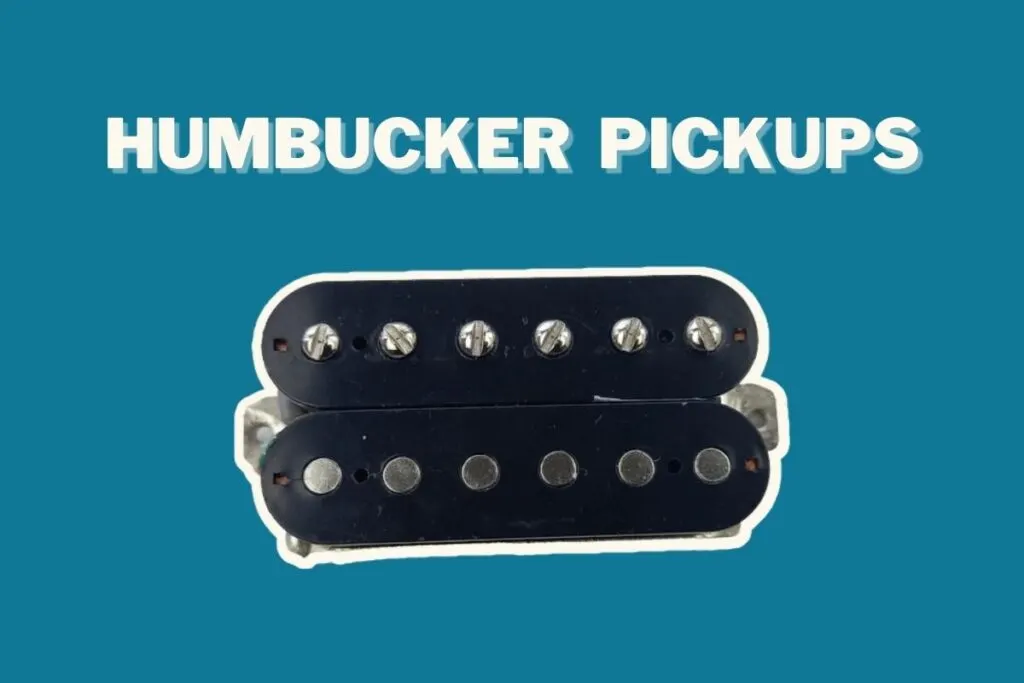
Generally, these pickups have a thicker, smoother sound than single coils but with less high end and jangle.
They’re usually larger than single coil pickups, but smaller models have been made to accommodate existing single coil pickup fittings.
Gibson PAF Humbucker Pickup
While it wasn’t the first humbucking pickup designed, the PAF is certainly the most well known (and arguably the most sought after) humbucker.
How it sounds
While the sound will vary from each manufacturer, PAF’s are generally known for their warm, full-bodied, rich sound.
The nickel plated cover helps roll off some of the higher frequencies, further adding to the warmth of the tone, making them a great choice for jazz and blues.
I think It’s fair to say that these pickups also played a large part in defining the sound of rock. The hum-canceling design means that these can be used in high-gain setups without getting bogged down with the dreaded hum like a single-coil.
So, you can break these pickups out to get the vintage hard rock tones of the 1970’s and 1980’s.
The flip side of this, some might say, is that these pickups can be less articulate than single-coils and other humbucker types. What is perceived as smooth and warm by one person, could be seen as flat and inarticulate to another.
For this reason, they’re probably not well suited for genres that need chime and jangle, like country. I’d also steer away from them for metal, as you’d probably want a pickup with better articulation and note clarity.
That said, if you’re looking for a vintage tone that’ll get you close to guitar heroes like Slash and Joe Bonamassa, PAF’s may well be for you.
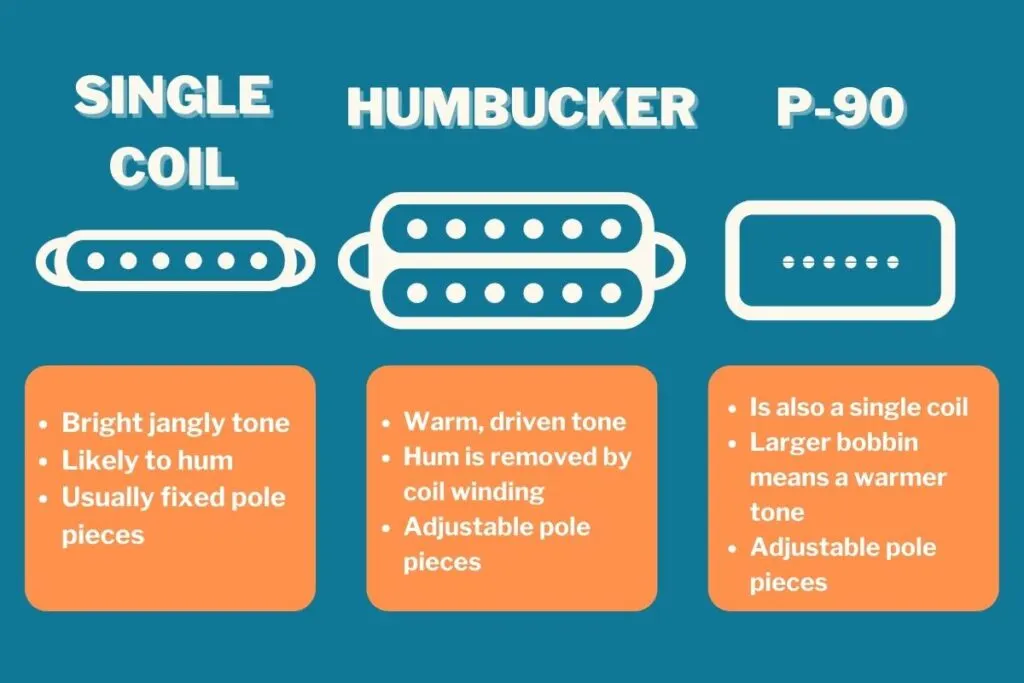
Wide Range humbucker pickup
The Wide Range humbucker is Fender’s answer to the PAF. But is often overlooked in the humbucker world.
How it sounds
This is a pickup from Fender, so you’re going to be getting plenty of brightness, clarity, and jangle, making it a great choice for modern pop, shoegaze, and rock guitarists.
But, it’s also a humbucker, so you’re going to get a high output with plenty of weight that will sound great as part of a high-gain guitar set up.
With more clarity and better articulation than a traditional PAF style humbucker, the Wide Range is suitable for most genres!
If you’re looking for a versatile pickup that sounds bright both clean and distorted, the Wide Range humbucker may just be for you.
Mini-Humbucker Pickup
Made by Epiphone popularized by Gibson: how does the mini-humbucker compare to its full-sized brother?
How it sounds
While it’s small, this squat humbucker has plenty of drive.
The best way to describe the mini-humbucker sound is somewhere between a humbucker and a single coil.
It has both the thickness and drive of the humbucker (and the hum canceling), but the brightness and top-end of a single coil.
The metal cover goes a little way to increasing the bass response of the pickup, but it’s still less full bodied than a standard humbucker.
The high-end makes it a great pickup for cutting through a mix for both rhythm and lead.
I’d recommend this pickup for those looking for a specific type of classic rock sound, but you’ll be able to get some great tones for blues, funk, and country from this too.
Examples:
- Heard in Thin Lizzy Jailbreak
Firebird pickup
Often mistaken for a mini-humbucker (and it makes sense why), let’s take a quick look at Gibson’s Firebird pickup.
How it sounds
Much like the mini-humbucker, the Firebird pickups sound bright with plenty of high-end, plenty of humbucker drive, but generally a lower output.
Again, these pickups can cover a very wide range of genres thanks to the coupling of their tight top-end and humbucker heaviness.
If you play classic rock, blues, country, or pop, these pickups could be the one for you. A special shoutout to slide guitar players on this one: Johnny Winter’s slide playing on a Firebird can show you just how versatile the sound of these pickups really are.
Examples of Firebird pickups
- Any song by Johnny Winter
- Maybe I’m Amazed (Solo) – The Beatles
- Freebird (Solo) – Lynyrd Skynyrd
Filter’Tron pickups
Created at the same time as the PAF humbucker, the Filter’Tron (or Filtertron) humbucking pickups have defined the sound of Gretsch guitars for generations.
How it sounds
The Filter’Tron is another versatile pickup, maybe more so than the mini-humbucker and Firebird pickup.
Like these other two pickups, the Filter’Tron gives you a sound that has the drive of a humbucker but the top end of a single coil.
But, I’d say that the Filter’Tron has more of both: more power behind the pickup, and more jangle in the top-end.
Like Fender’s Wide Range, this pickup is a worthy adversary to the PAF. It has rich, articulate clean tones that quickly beef up once you put it through overdrive. Put these pickups through fuzz and you can quickly get to a Jack White/Raconteurs sound.
I would stay clear of super high-gain genres with this type of pickup, however.
If you’re looking for an uniquely designed pickup with plenty of body, jangle, and depth: this may be the one for you.
Examples of Filter’Tron pickups:
- Any Chet Atkins song
- Jack White during early The Raconteurs
Rail Humbucker Pickup
I’ve already covered the history of the rail pickup, so let’s jump straight to the sound of the rail humbucker!
How it sounds
I have a rail humbucker in my Fender Marauder which forms part of the “Triplebucker” (when the single blade and humbucker blade are activated together).
I love the sound of my blade humbucker. It has a very strong presence with plenty of punch and drive, but also smoothness.
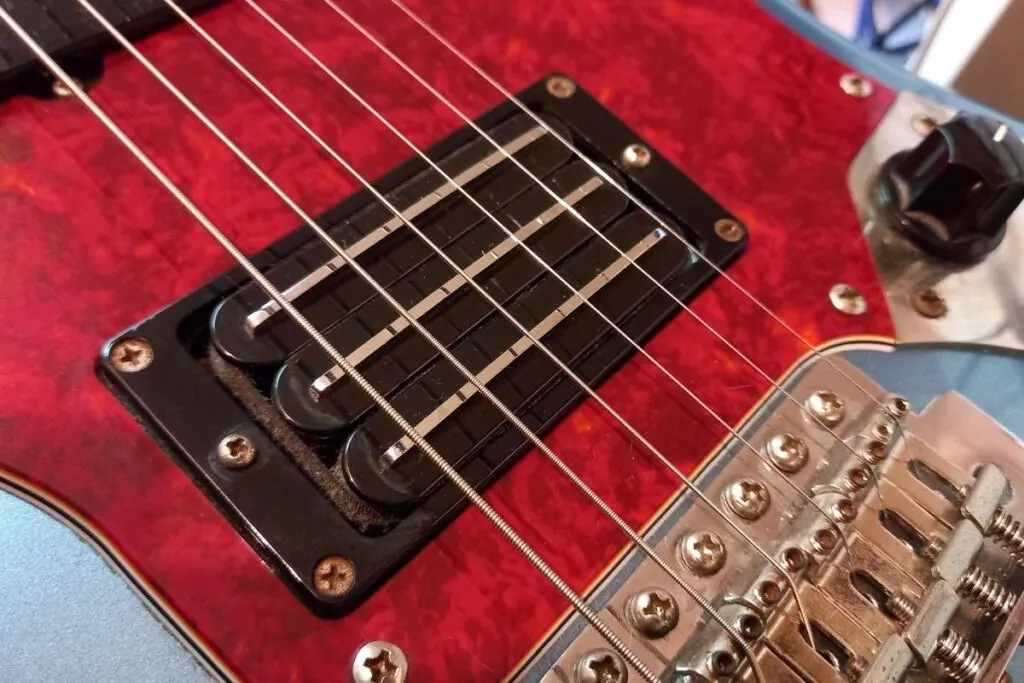
The blade has a more even response across all the strings, which means it’s perhaps less articulate than pickups with individual pole pieces, but it’s great for blasting out chords.
It’s my go-to pickup whenever I need to dial in hard-rock rhythm tones.
Active Pickups
So far, I’ve only talked about passive pickups. So, let’s switch that up and take a look at active pickups.
Active pickups were first made in 1976 by Rob Turner, a radio technician in the USA, who would go on to create EMG, Inc.
If the name “EMG” sounds familiar, that’s because it’s synonymous with the active pickup.
Rob Turner realized that he could negate pickup hum almost entirely by forming a coil with much less wire. But, this also meant that the output of the pickup was drastically lower.
To remedy this, the pickups were connected to a small internal preamp connected to a 9v battery that boosted the signal, giving it a high-output with low noise. An added benefit is that the signal doesn’t degrade over long lengths of cable.
Since their release, these pickups have become the go-to pickup for any guitarist in the metal community due to its clear articulation even in a high-gain set up.
How it sounds
There’s no “one sound” from active pickups, different manufacturers will vary, and they also come as either humbuckers or single-coil – but there are some commonalities.
Like I said, the main feature of these pickups is that they basically hum free (more so than a humbucker) which makes them the perfect choice for high-gain settings.
Not only this but they’re high-output pickups, so they’re really going to drive any amp they go into.
They have plenty of bite and a wide frequency response that makes them great at articulating picking each note. Perfect for shredding and sweeping guitar solos.
In a clean tone, they tend to be a bit flatter compared to most passive pickups, but it’s not a massive problem. The chances are, you’re not going to be using these for clean, country picking.
The real downside is that these pickups need a 9v battery to run. Whilst they can last for a very, very long time, when it runs out, so will your sound.
I’d suggest picking up these pickups if you’re looking for a high-output sound to use with a high-gain amp.
Examples of active pickups:
- Zaak Wilde
- Kirk Hammett
- Judas Priest
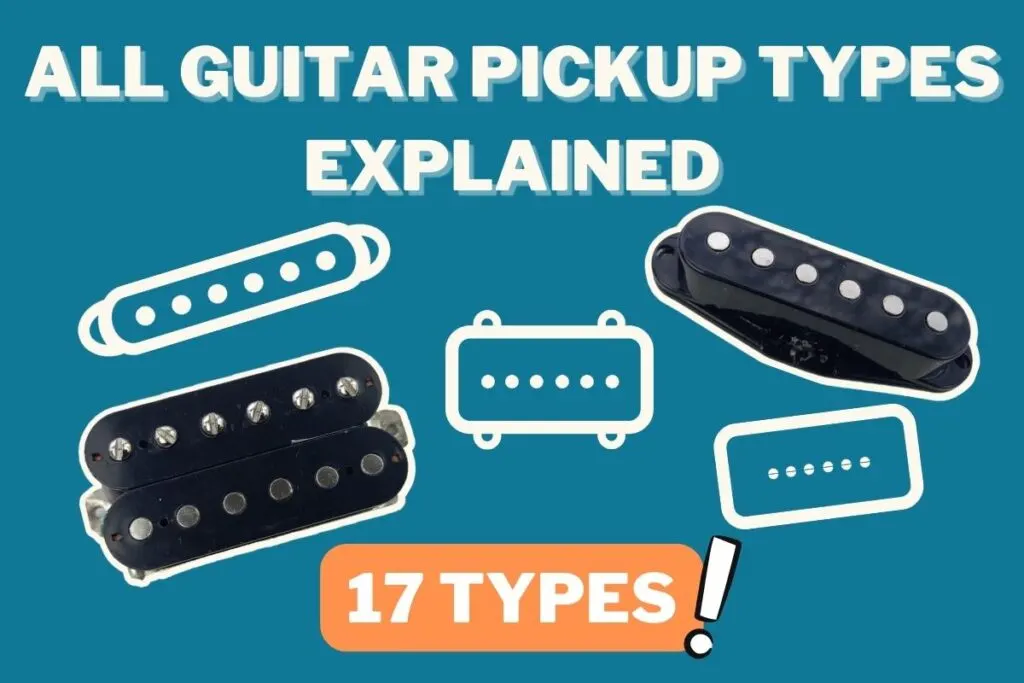

Conor is a music producer, multi-instrumentalist, and all-round enthusiast from the UK with over 15 years of experience. He’s the founder and sole-content creator for the roundtable audio blog and YouTube channel.
